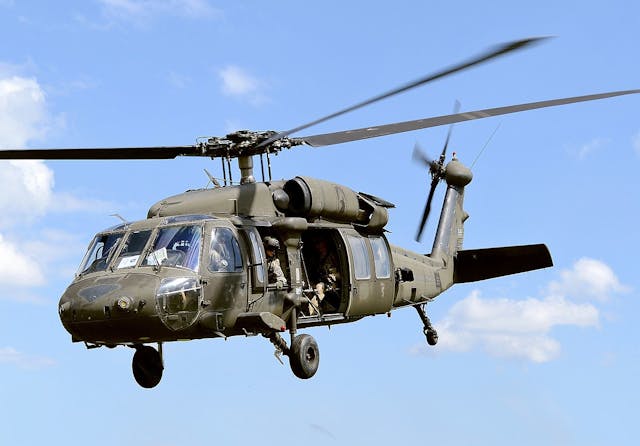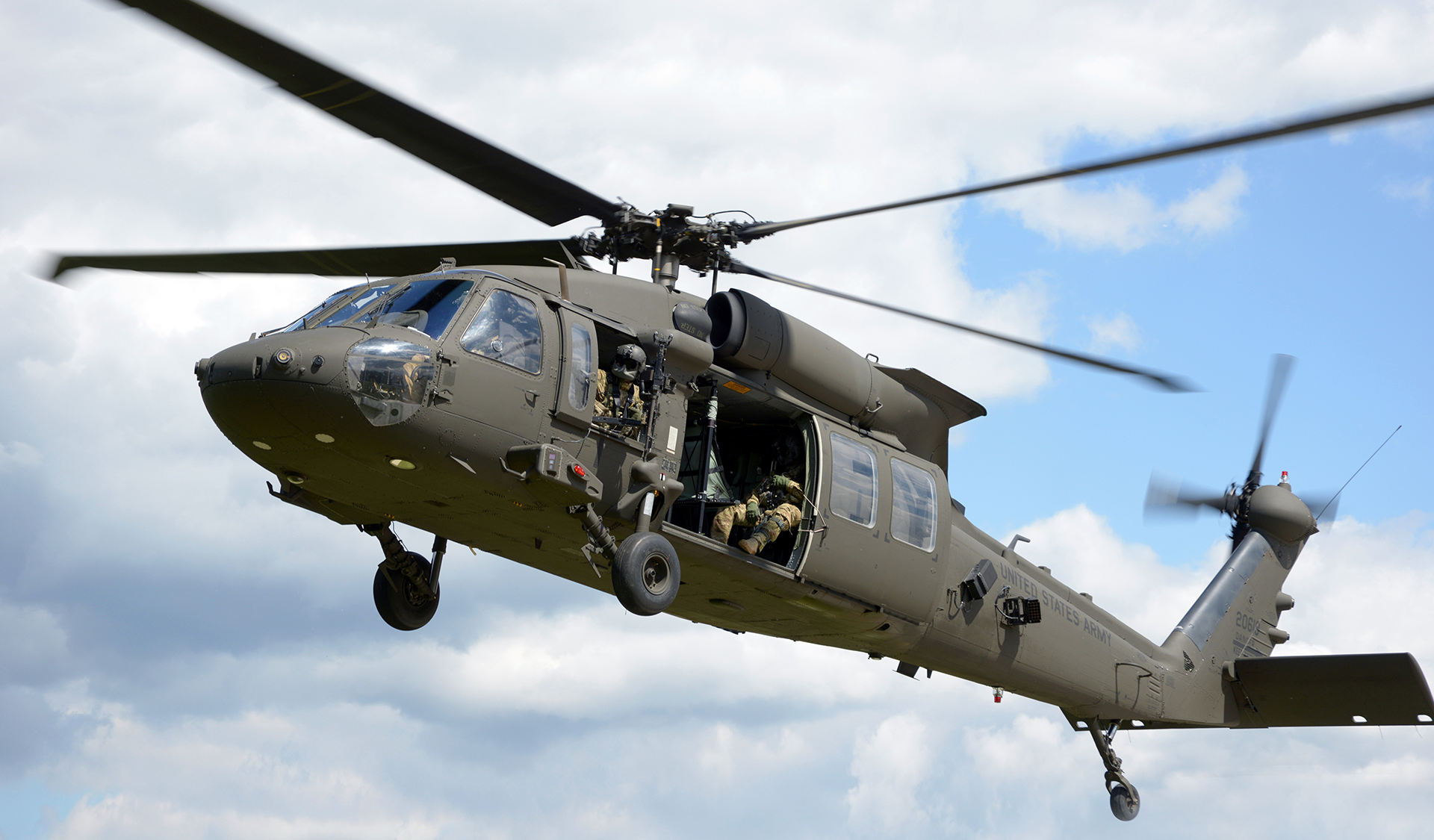Learn About the Upkeep and Upgrades That Maintain the Blackhawk Helicopter Mission-Ready
Learn About the Upkeep and Upgrades That Maintain the Blackhawk Helicopter Mission-Ready
Blog Article
Discovering the Thrills and Innovations of the Blackhawk Helicopter
The Blackhawk helicopter stands as a testimony to military air travel's development, combining technological improvements with sensible applications. What exists ahead for this legendary airplane, and exactly how will arising modern technologies form its future in military operations?
History of the Blackhawk Helicopter
Because its inception in the 1960s, the Blackhawk helicopter has actually played an essential duty in contemporary armed forces air travel. Developed by Sikorsky Aircraft, the UH-60 Blackhawk was created to meet the U.S. Military's need for a functional utility helicopter qualified of doing a variety of missions, consisting of army transport, medical discharge, and cargo airlift. The style was a response to the restrictions of earlier helicopters, especially in terms of rate, ability to move, and survivability.
The Blackhawk made its initial trip in 1974 and soon went into solution in 1979. Its intro marked a considerable advancement in helicopter innovation, featuring a two-rotor system that boosted performance and security. The aircraft's rugged building and construction and progressed avionics allowed it to operate efficiently in varied atmospheres and problems.
Throughout the years, the Blackhawk has been continually updated, integrating lessons picked up from various fight situations. Its implementation in conflicts such as the Gulf Battle, Somalia, and the Battle on Fear further strengthened its track record as a vital property. The Blackhawk's legacy is defined by its adaptability and resilience, making it a cornerstone of army air travel for decades.
Trick Functions and Requirements
The Blackhawk helicopter is distinguished by its durable design and advanced technical functions, which collectively boost its functional capabilities. Developed primarily for energy objectives, the Blackhawk boasts an optimum launch weight of roughly 22,000 extra pounds, enabling it to carry significant payloads while preserving agility.
Geared up with two General Electric T700-GE-701C engines, the Blackhawk accomplishes a maximum rate of around 183 knots and a series of 368 maritime miles - Blackhawk Helicopter. Its cutting edge rotor system includes a four-blade major rotor and a four-blade tail rotor, making certain security and ability to move in different flying problems
The helicopter's cabin can suit as much as 11 troops or different freight arrangements, showcasing convenience in goal accounts. In addition, the Blackhawk is created with sophisticated avionics, including electronic flight controls and a thorough cockpit screen, boosting pilot situational recognition.
For enhanced survivability, the Blackhawk includes ballistic armor and self-sealing gas storage tanks. Its capability to operate in diverse atmospheres, from deserts to icy terrains, additionally strengthens its credibility as a trusted system for humanitarian and army operations alike. The Blackhawk's combination of flexibility, power, and durability makes it a foundation of contemporary airborne abilities.
Advancements in Modern Technology
Advancements in technology have considerably improved the abilities of the Blackhawk helicopter, ensuring it remains at the forefront of military air travel. One of one of the most noteworthy advancements is the combination of sophisticated avionics systems, which supply boosted situational recognition with real-time information processing and screen. This technology enables pilots to browse complicated atmospheres extra successfully, improving objective success rates.

Furthermore, the introduction of electronic fly-by-wire systems has actually revolutionized the control systems of the Blackhawk, supplying smoother handling and increased responsiveness. Collectively, these technical improvements make sure that the Blackhawk helicopter remains an important possession in modern army procedures.
Roles in Armed Force Operations
With sophisticated innovation enhancing its abilities, the Blackhawk helicopter plays a complex role in army procedures. Primarily, it is utilized for troop transportation, allowing quick implementation and removal of workers in various combat scenarios. Its spacious cabin can suit as much as 11 soldiers, making it a crucial possession for large goals and special procedures.
Additionally, the Blackhawk functions as a medevac platform, equipped to carry injured soldiers swiftly and efficiently from the battlefield to clinical facilities - Blackhawk Helicopter. Its adaptability reaches logistical assistance, where it carries materials and equipment crucial for sustaining armed forces operations in remote areas

The helicopter is additionally important in reconnaissance objectives, supplying airborne monitoring and intelligence-gathering capabilities. Its capacity to operate in varied settings-- varying from urban setups to extreme surfaces-- further solidifies its value on the battleground.
In Addition, the Blackhawk can be equipped with innovative weapons, enabling it to involve in fight and provide close air support. This versatility emphasizes the helicopter's essential role in modern-day army strategies, making it an essential element of militaries worldwide.
Future Developments and Innovations
Innovations in technology assurance to usher in a new era for the Blackhawk helicopter, enhancing its capacities and operational effectiveness. Future growths for the Blackhawk may consist of improvements in avionics, such as innovative trip control systems and improved situational awareness devices powered by artificial intelligence.
In addition, the assimilation of unmanned systems is on the horizon, possibly enabling manned-unmanned teaming procedures that can broaden objective profiles and lower danger to personnel. The Blackhawk's design is also anticipated to incorporate lighter and stronger products, improving gas effectiveness and total performance.

Conclusion
Finally, the Blackhawk helicopter represents a considerable success in armed forces aviation, identified by its adaptability and advanced technical functions. Its historical evolution mirrors a continual response to functional needs, improving capabilities in various duties such as troop transport and medevac operations. Continuous innovations, consisting of the assimilation of man-made intelligence and hybrid-electric propulsion, assure to further strengthen the Blackhawk's efficiency and significance in future military interactions, ensuring its status as a crucial possession on the battleground.

With sophisticated modern technology improving its capacities, the Blackhawk helicopter plays a multifaceted function in view it now military procedures. (Blackhawk Helicopter)
Report this page